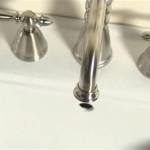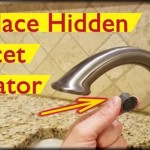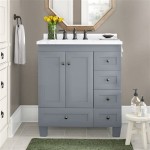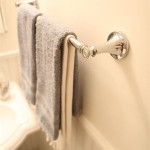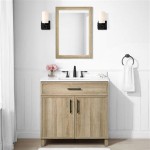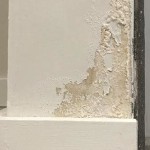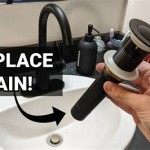How to Cut a Large Bathroom Mirror in SketchUp
SketchUp is a versatile software widely used for architectural design, interior design, and a myriad of other 3D modeling applications. When designing bathrooms in SketchUp, accurately representing mirrors is vital for both visual aesthetics and spatial planning. However, simply adding a rectangular surface and applying a reflective material may not be sufficient. Often, designers need to customize the size and shape of mirrors to fit specific design requirements, such as fitting around fixtures or incorporating unique design elements. This article details how to effectively cut a large bathroom mirror in SketchUp, providing a comprehensive guide to several methods and considerations.
Understanding SketchUp's Modeling Environment
Before attempting to cut a mirror, it's essential to understand SketchUp's modeling environment. SketchUp primarily works with faces and edges to create 3D objects. Faces are the surfaces of an object, and they are defined by edges. To cut a mirror, designers are essentially modifying these faces and edges. It's also crucial to be aware of the concept of groups and components, which are fundamental for organizing and managing complex models. Grouping elements logically helps prevent unintended modifications and simplifies the overall workflow.
Successfully cutting a mirror requires a solid grasp of SketchUp's tools, including the Line tool, Rectangle tool, Circle tool, and the Push/Pull tool. The Line tool allows for drawing straight lines and connecting points, forming the basic outlines for shapes. The Rectangle and Circle tools provide shortcuts for creating common geometric forms. The Push/Pull tool is crucial for extruding 2D shapes into 3D objects or for subtracting volumes to create cutouts. Understanding how these tools interact and how to use them precisely is paramount for achieving the desired results when cutting a mirror.
Method 1: Using the Intersect Faces Feature for Basic Mirror Cuts
One of the most straightforward methods for cutting a mirror in SketchUp is to utilize the Intersect Faces feature. This method is particularly useful when the desired cut shape is defined by another object or geometry already present in the model. This approach involves creating a cutting object, positioning it to overlap the mirror, and then using the Intersect Faces command to create edges where the two objects intersect.
First, create the large rectangular mirror using the Rectangle tool. Assign it a suitable thickness using the Push/Pull tool. Next, create a separate object representing the desired cutting shape. This can be any arbitrary shape, from a simple rectangle to a more complex geometric form. Place this cutting object so that it intersects the mirror where the cut is desired. Ensure that the cutting object completely passes through the mirror to create a clean cut.
Select both the mirror and the cutting object. Right-click on either object, and choose "Intersect Faces." This will generate edges on both the mirror and the cutting object where they intersect. Now, remove the unwanted portions of the mirror using the Eraser Tool. Carefully click on each edge and face that needs to be removed. To ensure a clean cut, zoom in closely to avoid accidentally deleting the wrong elements. Finally, delete the cutting object, leaving the mirror with the desired cut shape. This method is efficient for creating simple, precise cuts based on existing geometry within the model.
Method 2: Employing the Line Tool and Eraser for Complex Mirror Shapes
When creating more intricate or freeform cuts on a bathroom mirror, using the Line tool in conjunction with the Eraser tool provides a more flexible approach. This method allows for drawing custom cut lines directly onto the mirror's surface and then removing the undesired sections. This technique is particularly useful when the desired shape is not easily defined by existing geometry.
Start by creating the initial rectangular mirror using the Rectangle tool and extruding it to the desired thickness with the Push/Pull tool. Then, using the Line tool, draw the desired cut shape directly onto the surface of the mirror. Ensure that the line segments form a closed loop, defining the region to be removed. SketchUp automatically creates a new face within the boundaries of the drawn lines. This is a crucial step, as it allows for separate manipulation of the cut-out section.
Once the cut shape is drawn, use the Eraser tool to remove the face and the edges that define the unwanted portion of the mirror. Carefully select each edge and face within the defined area to delete them. For complex shapes with many edges, this process may require patience and precision. Zooming in and working methodically is essential to avoid errors. After removing the unwanted sections, the mirror will have the desired custom shape. This method offers greater control over the cutting process, allowing for the creation of arbitrary and intricate mirror designs.
Method 3: Using Components and Boolean Operations with SketchUp Extensions
For complex cuts or designs that require repeated use, utilizing components and Boolean operations, often facilitated by SketchUp extensions, is a highly efficient method. Components allow for creating reusable elements, while Boolean operations allow for combining or subtracting volumes, creating complex shapes with relative ease. Several SketchUp extensions offer advanced Boolean operation capabilities, greatly simplifying the process of creating complex cuts in a mirror.
Begin by creating the initial rectangular mirror and converting it into a component. This ensures that any changes made to the component will be reflected in all instances of it within the model. Next, create the cutting object, which can be a complex shape or a combination of shapes. It is also recommended to convert the cutting object into a component for better management, particularly if it is to be reused. Position the cutting component so that it intersects the mirror component where the cut is desired.
Install a SketchUp extension that supports Boolean operations. Some popular options include "Boolean Tools" and "Eneroth Solid Tools." These extensions provide tools for performing operations such as Union, Subtract, Intersect, and Trim. Select the mirror component and the cutting component, and use the Subtract or Trim tool from the chosen extension to remove the volume of the cutting component from the mirror component. The extension will automatically perform the necessary calculations and create the cut in the mirror. This method is significantly faster and more accurate than manual methods, particularly for complex shapes or operations that need to be repeated multiple times. Due to the use of components, any modification to the original cutting component will instantly update the design
Considerations for Complex Mirror Designs
When dealing with complex mirror designs, several considerations become particularly important. First, the complexity of the geometry can impact SketchUp's performance. Heavily detailed models can slow down the software, making it difficult to work efficiently. Optimizing the model by simplifying geometry where possible and using components effectively can mitigate these performance issues. Also, subdividing a face more times than necessary will also cause the mirror itself to become cumbersome and lag rendering depending on the hardware.
Second, the accuracy of the cuts is critical for achieving the desired aesthetic and functionality. Small errors in the cutting process can lead to visually unappealing results. Therefore, it is essential to zoom in closely and work with precision when drawing lines or using Boolean operations. Using guidelines and inference points can also help ensure that the cuts are aligned correctly and that the final shape is accurate. The tape-measure function will help ensure that the lines being drawn is completely aligned to the desired dimensions.
Third, consider the material properties of the mirror. Adding a reflective material to the mirror surface is essential for achieving a realistic appearance. SketchUp's material library includes a variety of reflective materials that can be applied to the mirror. Experimenting with different materials and adjusting their properties, such as reflectivity and roughness, can help achieve the desired visual effect. Additionally, consider the lighting in the bathroom model, as it will significantly impact how the mirror reflects light and appears in the scene. Adjusting the lighting settings to accurately simulate the natural or artificial light sources in the bathroom can enhance the realism of the rendering.
Furthermore, layering can be an important facet when designing more complex bathroom scenes. Using "Tags," SketchUp's layer feature, is a good way to isolate different geometrical pieces of the model. This will allow the user to effectively hide elements that could be interfering with their current work. Utilizing the tag feature is critical when creating the cutting geometry so that it can be toggled on and off as needed.
Finally, when exporting the model to other software for rendering or fabrication, ensure that the mirror geometry is clean and well-defined. Exporting a model with errors or inconsistencies can lead to problems during the rendering or fabrication process. Before exporting, carefully review the model for any issues and correct them as needed. This helps ensure that the final rendered image or fabricated mirror accurately reflects the intended design.

51 Bathroom Mirrors To Complete Your Stylish Vanity Setup Free Autocad Blocks Drawings Center

51 Bathroom Mirrors To Complete Your Stylish Vanity Setup Free Autocad Blocks Drawings Center

Framing A Bathroom Mirror And Building Cabinet

How To Make A Diy Bathroom Mirror Frame Thediyplan

How To Make A Diy Bathroom Mirror Frame Thediyplan

Xl 6960lm Sleeky Long Oval Anti Fog Bathroom Mirror 600 1200mm Wall Smart

Building A Walnut Floating Mirror Frame Brian Benham S Blog

Push Pull Issue Sketchup Community

How To Make A Diy Bathroom Mirror Frame Thediyplan

Industrial Mirror With Corner Brackets Wicked Handy
Related Posts
